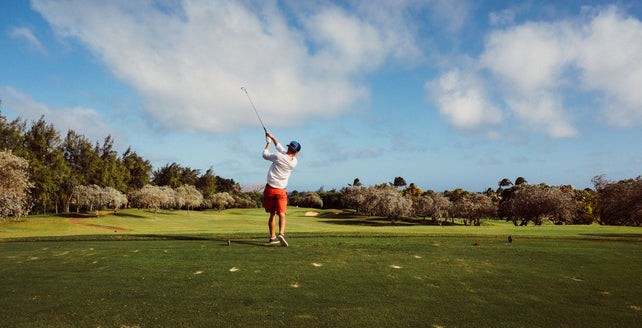Learn the Layout: Parts of the Golf Course You Run Into
Jul 29, 2020
Golf courses come in all different shapes and sizes. Most have 18 holes, and at each hole the golfer takes a drive or stroke in order to move the ball around the course to the next hole. The aim is to go from tee to green as quickly as possible, with as few strokes.
Whether you’re brand new to golfing or are a novice that has taken a few golf lessons, there are some parts of the golf course that you'll need to know. Understanding each component will come in handy when choosing a club or planning a shot.
The Tee Box
The tee box, also known as the teeing ground, is where the hole begins. This area is flat so that the golfer can get a clean tee shot. Any golf course you go to will have more than one set of tee boxes at each hole.
When golfing, you will tee your ball between the two markers at each tee box. The ball and tee can be placed behind the markers by up to the length of two clubs, but never in front of the markers.
The Fairway
The fairway generally measures 30 to 50 yards between the tee box and the green. You’ll notice that this part of the course has tightly trimmed grass, which makes it easier to hit the ball away from the fairway when compared to other areas of the course.
During your golf training, you’ll want to practice your tee shot in order to get the ball in the fairway. This makes your proceeding shots much easier, since the surface is meant for easy ball movement.
The Green
The green is where each hole is located. The grass here is also cut short, which provides the perfect surface for the ball to easily roll when a golfer is putting.
Compared to the fairway, you may notice that the green has somewhat longer grass on the edges. This area, known as the fringe, can be tricky to deal with.
As you learn a course and the game of golf, you’ll understand the importance of reading the green. The condition and contour of the green will impact how the ball rolls toward the hole. For example, if the ball lands on a dry, firm green, it will roll quickly. But a wet green causes the ball to roll slowly.
The Rough
The rough surrounds the fairways. This component of the course has longer grass than the fairways, which means the surface isn’t ideal for hitting the ball from. Depending on the course, you may find that grass in the rough is cut at different lengths. This makes the area more challenging and unpredictable to play from, so watch where you swing!
Hazards
Hazards make the game even more difficult. A golf course will have water as well as bunkers in order to make play more challenging for golfers.
Water hazards include ponds, lakes, rivers, and creeks. On coastal courses, the ocean serves as a water hazard. The holes in the ground filled with sand are the bunkers. Bunkers are typically located near the fairway and the green.
Boost Your Golf Game with PEAK™ Certified Professional Training

Elevate your game and master the course with PEAK Certified Professional Training from Foresight Sports. Our online golf lessons were developed by some of golf's most knowledgeable, trusted, and skilled instructors.
Using technology combined with instruction, you can improve your game and grow professionally. Boost your performance today! Learn more about PEAK Certified Professional Training on our website at https://www.foresightsports.com/pages/peak or by calling us at (858) 880-0179.




































